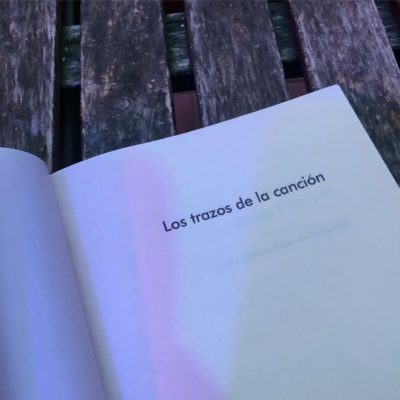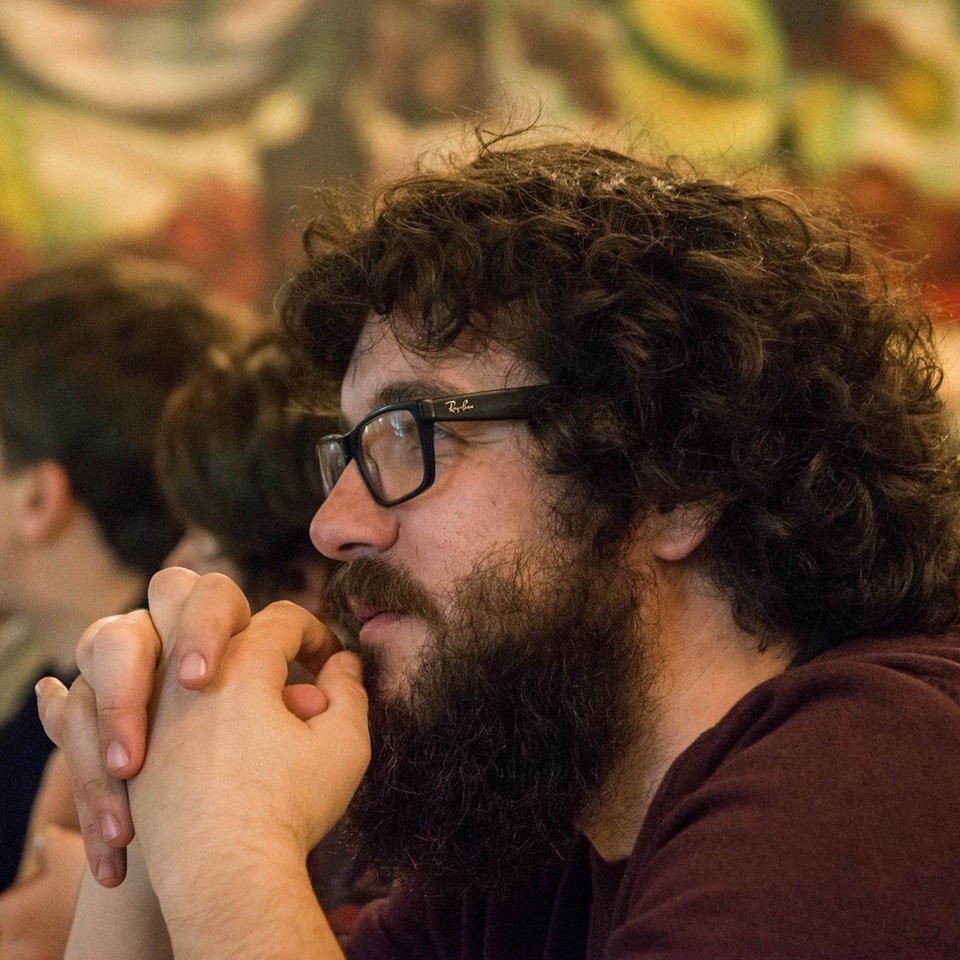Search
To search for an exact match, type the word or phrase you want in quotation marks.
A*DESK has been offering since 2002 contents about criticism and contemporary art. A*DESK has become consolidated thanks to all those who have believed in the project, all those who have followed us, debating, participating and collaborating. Many people have collaborated with A*DESK, and continue to do so. Their efforts, knowledge and belief in the project are what make it grow internationally. At A*DESK we have also generated work for over one hundred professionals in culture, from small collaborations with reviews and classes, to more prolonged and intense collaborations.
At A*DESK we believe in the need for free and universal access to culture and knowledge. We want to carry on being independent, remaining open to more ideas and opinions. If you believe in A*DESK, we need your backing to be able to continue. You can now participate in the project by supporting it. You can choose how much you want to contribute to the project.
You can decide how much you want to bring to the project.

I’ve always been struck powerfully by people who feel connected to a certain place. I am not referring to a question of identity or nationalism, but rather to an opposite feeling. I am attracted to people who are symbolically connected to their territories, either because they live in them, or because they yearn for them and evoke them from other places. I cannot help it. I am seduced by everything that has to do with emotional communion between people and places. I suppose all this has to do with certain interests in the landscape, and in nature.
When A*Desk proposed that I take over the editorial of June 2020, the pandemic had not yet reached our lives. It was the beginning of January, and I went ahead and proposed the telluric as the theme of the month. I began to think then of those people who, perhaps, could feel similar, and I contacted them to invite them to write. I talked to Anna Dot, an artist, a walker and a language researcher; Rafel G. Bianchi, also an artist, and someone with whom I learn about the tenacity and repetition of the artistic gesture; Alexandra Laudo, a curator with whom I share a passion for narrative art; Alex Gil, a polypoetic and cassette tape producer from the local underground; and Jordi Mitjà, for me – whether he likes it or not – the telluric artist par excellence. They all accepted with pleasure. And my suggestions and indications were minimal. I knew about the “octaviana” walks that Anna Dot and others were taking since the summer of 2019, Bianchi’s obsession with the Olot athletics track, Alexandra Laudo’s fascination with Irene Solà’s literary and artistic work, Alex Gil’s passionate knowledge about the context of local music in Barcelona, and I couldn’t imagine that all this wasn’t closed by Jordi Mitjà’s words. In short, we talked a little and the proposal was simple: do you want to talk a little bit of tellurism?
In essence, nothing has changed between the moment I received the assignment and the moment the texts have been published. Although everything is different, since all of us who are part of this June editorial have written about “the influence of the soil of a region on its inhabitants” (that is the definition of tellurism given by the RAE, the Real Academia Española de la Lengua) under the conditions of confinement, or just in its first moments of de-escalation. In any case, talking about almost mystical intensities with the place without being able to leave home, affects anyone. Perhaps, this radius of action limited to the domestic, to the intimate, has over dimensioned our connection with the places where we act, since we miss them.
My relationship with the territory, and therefore with the telluric, is always determined by a look from the contemporary art, although that same look usually needs to leave the art and go to other fields, like music or literature, also included in the chapters of this editorial. And I say this because, from the point of view of art, we often envy movement, the frenetic pace of working in multiple places, which are increasingly distant, increasingly important. Expanding our radius of action as an engine of progress. And about this, I have to say – still confined when I write – that my perspective on the subject changed a few years ago as a result of reading Walter Benjamin’s The Storyteller [1] . In this essay, dedicated to the Russian writer Nikolai Leskov and his way of narrating from experience, Benjamin states that the germ of the narrative is found in the figure of the traveller as well as in that of the peasant. In fact, Benjamin tells us: “When someone goes on a trip, he has something to tell about”, goes the German saying, and people imagine the storyteller as someone who comes from afar. But they enjoy no less listening to the man who has stayed at home, making an honest living, and who knows the local tales and traditions. If one wants to picture these two groups through their archaic representatives, one is embodied in the resident tiller of the soil, and the other in the trading seaman”.
When I first read this I was not so attracted to the sedentary peasant – the one who does not leave his homeland and knows his traditions and stories – but, little by little, I understood his conception better, and the truth is that now I feel very close. And in this sense, my approach to the telluric is directly related to that belonging, admiration and sensitive knowledge of a certain place. Staying and getting to know the place is no small thing. Beyond its forms of expression, always somewhat close to the mystical, the spiritual, the symbolic, feeling the telluric energies implies a high level of complicity with the place, and that is what these five chapters have dealt with.
During the confinement, I read The Songlines [2] by Bruce Chatwin, and there lies one of the central axes of my telluric devotion. I cannot imagine a more precious idea in relation to the territory than the belief of the Australian aborigines. “The Aboriginal creation myths speak of the legendary totemic beings that roamed the continent in Dreamtime, singing the name of everything that crossed their path – birds, animals, plants, rocks, ponds – and giving life to the world with their song. In fact, the nomadism of the aborigines had and has to do with that ancestral song, which is both a map and a score, and therefore a system of orientation and recognition.
In turn, during this time I have been reviewing some cases of people especially marked by the telluric load of certain places; in short, people who are part of territories, and territories that are part of people. And, without any ambition beyond individual consumption, without any order, and really without any will to investigate, I have been recovering some telluric approaches that, I believe, can now serve as an accompaniment to this month’s texts. I am thinking, for example, of the book The Living Mountain [3] by Nan Shepherd, a Scottish writer who dedicated a large part of her life to knowing and writing about the mountains where she was born, the Cairngorms, in the north-east of Scotland, or the novels of Kent Haruf, an American writer who always set his stories in small communities in the state of Colorado. But I also think of Robert Guédiguian’s filmography, which focuses on Marseille, his hometown, and the setting for stories in which basically the same actors tend to appear. And the work of Welsh artist Bedwyr Williams comes to mind, who in some of his proposals intensifies and vindicates his Welsh condition in the context of British art. And, of course, I think of Caro Diario by Nanni Moretti, and “Stranizza d’amuri”, that wonderful song in Sicilian by Franco Battiato. And I feel like listening to Calexico, which, perhaps because they live in Tucson, Arizona, 90 kilometres from the Mexican border, have achieved a mestizo sound that could not be made anywhere else. And from Calexico I jump to the songs of Miquel Serra, which when I listen to them make me want to be a Majorcan.
After all, the vision I can offer about the telluric has to do with that passion between people and places. It has to do with enjoying in a special way when someone, speaking, without even trying, makes the place speak. I insist that making the place speak is not an objective, nor a function, but something that simply happens, and that, perhaps, as with the energies of the earth, is only felt by some. I would say that, in this collection of texts, this “making the place speak without pretending” happens in different ways. It passes through rods and pendulums that react to underground forces, or through a painting that tries to capture the present of an ideal landscape of its own, or from the analysis of a fragmented story lived in a place endowed with magic, or from the observation of the telluric region that a record store in your neighbourhood concentrates. And it ends with an artist lost in a nearby forest who, on finding his way out, discovers the intensity of his craft there.
[1] Walter Benjamin. The Storyteller. First printed in Orient und Okzident, 1936; rep. in Illuminations, trans. Harry Zohn; ed. & intro. Hannah Arendt (NY: Harcourt Brace Jovanovich 1968), pp.83-109.
[2] Bruce Chatwin. The Songlines. New York: Viking, 1987.
[3] Nan Shepherd. The Living Mountain. Canongate Books, 2011 (first published October 27th 1977).

David Armengol (Barcelona, 1974) is an independent curator who combines his curatorial practice with other parallel activities such as cultural management and teaching. He is particularly interested in music, nature and storytelling, but from the field of contemporary art. In other words, he does not know how to play any instrument, is not a great adventurer and does not master the art of storytelling. In a way, it is enough for him that his passions of sound, landscape and narrative coexist in the format of an exhibition. That’s why he always thinks of artists.
"A desk is a dangerous place from which to watch the world" (John Le Carré)